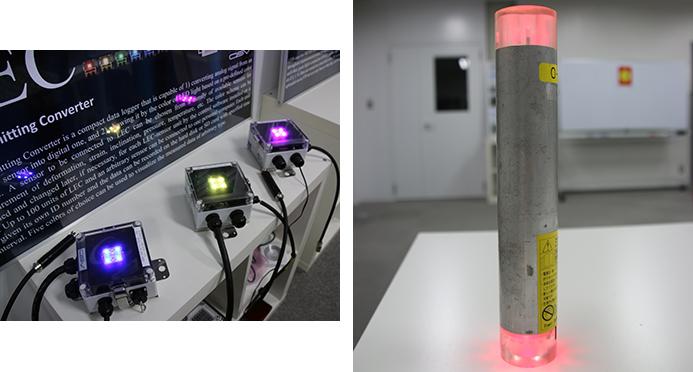A safety monitoring method called On-Site Visualization has been implemented in metro system construction sites in Jakarta, Indonesia as part of a Japan International Cooperation Agency (JICA) project. The technology was developed by Professor AKUTAGAWA Shinichi (Kobe University Graduate School of Engineering).
On-Site Visualization (OSV), as its name suggests, is a real-time data processing technology used to check safety levels at construction sites. A device with built-in LEDs is attached to walls and pillars at the building site and measures any irregularities or tilting. The LEDs light up like traffic lights to indicate the danger level with different colors: blue for "no irregularities", and yellow and red for "danger of collapse". This clear method of representation is important in countries with low literacy rates.
 |
|
These are two devices used in the project: the LEC (left) and LEIS (right). These devices are attached to walls, and change color to warn of danger, measuring small irregularities in structures. (Photo courtesy of Kobe University) |
The JICA project, titled Economic and Social Development Support in Developing Countries through Partnerships with the Private Sector, had participants from multiple private organizations in the OSV Consortium (an industry-academic collaborative group that promotes use of OSV technology). Professor Akutagawa oversaw the technology use. The teams monitored safety levels using OSV for a fixed period at three metro system building sites in the center of Jakarta (two stations in the city center and an elevated track in the south). Following this, they held a seminar presenting the results of the implementation. The project was evaluated highly by the head of construction at Jakarta MRT, who stated that "We can now expect higher standards of safety management".
In many developing countries, an increase in public works is accompanied by a sharp rise in the number of accidents, and there is a growing need for safety monitoring. "I want to build a human network that combines know-how from different fields to improve levels of safety and security" commented Professor Akutagawa.












